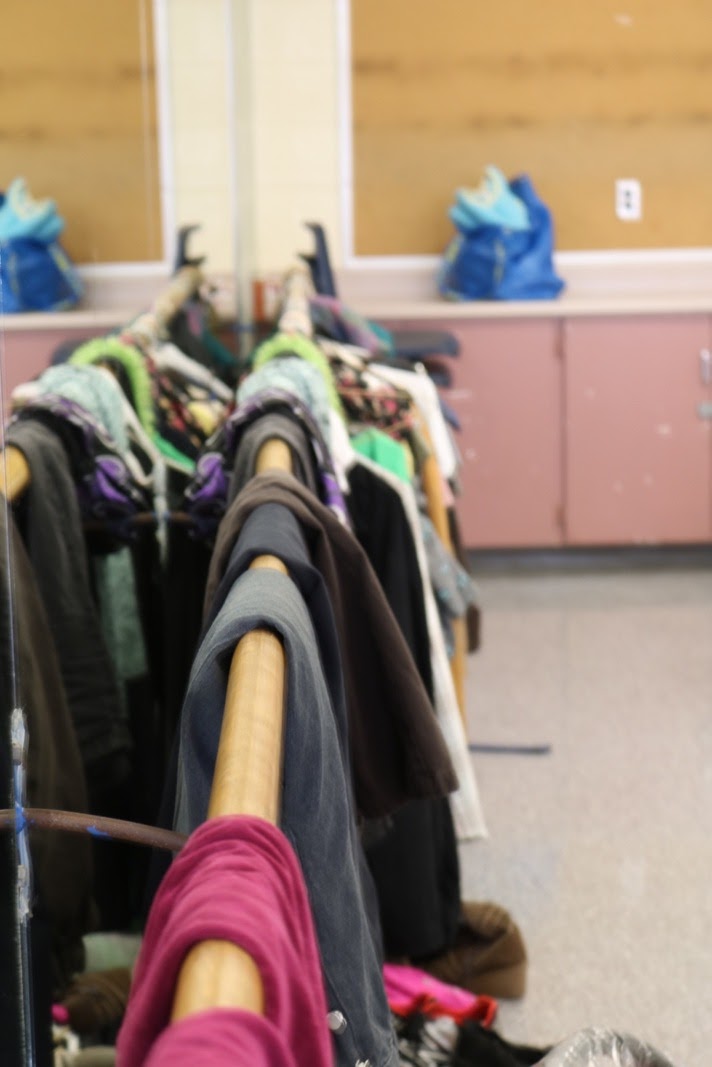Many times parents are convinced that they are sending children to school to “get” an education.The reality is that children are learning wherever they go and whomever they are with, therefore all things (whether good or bad) contribute to their education.
Today social media is a huge influence on children and has even been shown to impact how children write and speak. Shifting our views helps to develop critical thinking and adds to our creative options and improves our problem solving skills in social environments, like school.
A simple action, such as taking the time to communicate with our kids about their school day, can positively improve their (and subsequently your) communication skills. These things may sound insignificant but can have a huge long-term effect.
Another extremely powerful way to play a positive role in your our kids’ lives is by becoming actively involved with the school they attend. Many parents do not realize just how important it is to take the time to be in the school and get to know the principal, the teacher and their teaching philosophy.
Teachers are essential figures that can help your child develop critical enquiry skills and foster a sense of confidence. However, they are also people who appreciate knowing and learning about the background of the child they are teaching on a daily basis. Parents are the first teachers of their child and it is important to continue to have an active part in your child’s learning by partnering with the teacher to support what the child is learning and extend that learning outside of school.
Even if homework can be difficult for parents to understand, simply asking the child if they have homework and encouraging them to do their homework in a quiet place and for a decent amount of time is really effective. Then checking the homework to make sure it is completed and done neatly will help a child see that their parents are invested in what they do. The child will begin to develop a routine of doing homework because they expect their parents to check it on a regular basis.
Parents need to recognize the power they have to help their child be successful and how important parents are to the school they have chosen to help educate their children. If parents work together and have their voice heard, by joining the parent council, attending parent-teacher interviews and parent conferences, schools can only get better. Parents are the gateway to ensuring a better education for their child by being an integral part of the school’s culture.
GET INVOLVED!
Nutritional alternatives for low-income households
Low-income families in the Downsview community have been overwhelmed with the rising costs of fresh fruits and vegetables, and the prices are only expected to get increase.
According to the University of Guelph’s Food Institute, the average Canadian family spent an additional $325, per month, on food in 2015. The prices of food are expected to rise another four per cent, which means families will likely spend an extra $345 on their groceries in 2016.
Since the majority of fresh fruits and vegetables in Canada are imported, the prices are vulnerable to Canada’s devaluing dollar. But there is a solution for low-income households insists Dr. Carol Greenwood, Senior Scientist at Baycrest Health Sciences and Professor of Natural Sciences at the University of Toronto.“People need to feel more comfortable consuming frozen and canned fruits and vegetables because they are actually healthy. They may not have the same taste or texture, but we should move over to these alternatives in the midst of the rising food prices.”
Dr. Greenwood explains that fresh and frozen produce are very close in the amount of nutrients they contain as they both experience loss through processing. Our frozen fruits and vegetables are picked when they are peaked and optimal then frozen and processed right away. Our fresh fruits and vegetables are picked under ripe to be transported and distributed amongst Canadian grocery stores. Both methods experience a loss of nutrients.
When picking out canned food, Dr. Greenwood states, “Do not buy canned fruits with added sugar or canned vegetables with added salt. Make sure you read the labels and go for sugar and sodium free.”She also suggests that we “go back to our roots” when Canadians did not have as many food options in the winter months they consumed storage crops like cabbage, carrots, brussel sprouts and potatoes –which are all reasonably priced year-round.
“We [seniors] need to go back to our youth and use the recipes our moms used to feed us,” she said.Low-income earners, specifically seniors, should not skimp away from consuming all the necessary proteins and nutrients that they need to continue living a healthy life. Dr. Greenwood advocates moving away from expensive meats and poultries and instead getting protein from eggs, beans and lentils –all high-quality items that are inexpensive.“Since this year is the [United Nations] Year of the Pulses [a movement to consume legumes as a primary source of protein] we should really consider incorporating more beans and lentils in our meals instead of meat,” suggested Greenwood.
To keep a budget and still have nutritional meals, Dr. Greenwood emphasizes that families shop the sales, eat foods that are in season, eat locally grown food and reduce our food waste [Canadians throw out more than $1,000 worth of food that goes bad or stale, per year.]
Although the cost of food and living has risen substantially there are many budget-friendly alternatives, like frozen and canned foods, that will keep families and seniors healthy and thriving.
Physician assisted death is coming to Ontario –are we ready?
On February 6, 2015, the Supreme Court ruled that physicians could assist people in ending their lives.The government was given one year to change the law so that it would conform to the ruling. The prior Conservative government avoided the issue, and the new government asked for an extension. The Court has given it until June 6, 2016.
Presumably the new law will clarify who, in addition to doctors, is allowed to assist patients’ wishes for a hastened death. However, Health Care is the responsibility of the Provincial Government, and Queen’s Park has to regulate the delivery of this service to Ontarians.
Even without the distraction of an election campaign, our province has provided limited leadership. It has relied on the College of Physicians and Surgeons of Ontario (CPSO) to draft a policy for its members, which although detailed, does not follow some important expert recommendations and may lead to delays in access for some patients.The Ontario College of Pharmacists has prepared a preliminary document for its members but it is not sufficient to guide practice. The College of Nurses website simply reminds its members that assisted death is illegal and asks them to watch for changes in legislation.
Similarly, the province has been silent on how institutions will respond to a request for assisted death, leaving each hospital, nursing home and other facilities to expend considerable resources to formulate such policies in parallel. And it does not appear that they have made much progress.
In Downsview, a search of “Assisted Death” on the Humber River Hospital website leads to a page entitled “What You Need to Know About Palliative Care”, which was “ Last Revised: October 2011”. There is no mention of assisted death nor that of the process patients must follow.
This makes sense, because assisted death has very little to do with Palliative Care. The latter is a compassionate approach to providing comfort and support to patients diagnosed with an incurable illness, helping them to maximize quality of life.
To underscore this point, the largest group of doctors that provide home palliative care in Toronto has no physicians who work in Downsview and who are prepared to offer assisted death for their patients. Fortunately, the organization has been preparing for a change in the law since before the Supreme Court even heard the case.
“Assisted death is not a part of what I can do as a physician, and it certainly is not a part of Palliative Care”, said one of these doctors on condition of anonymity. However, he added that “we respect the court decision and we respect the rights of our patients.”
His organization will ensure that all of his patients will have access to a referral in the event that they choose assisted death, using a reporting system.
The right to assisted death is no longer up for debate. The Province could ensure facilitated access for all Ontarians by instituting mandatory reporting, a central referral process, and providing direction to its professionals and institutions.
Does the government have the will to show leadership on this issue?Let us know what you think!
PEACH 25th Anniversary Celebration
On Thursday February 25th at the Oakdale Golf and Country Club PEACH (Promoting Education and Community Health) celebrated their 25th anniversary in the Jane and Finch community. We have some pictures of the event below for you in case you missed the festivities!Photo Credits: Atieno Miguna 

Big Telecoms raising your internet price
Your internet bill is going up soon -if your service is with Bell or Rogers. The two companies announced earlier this month that the price of their services are going up across the board. I got my letter just last week.As consumers, we do not have much of a choice as far as internet services are concerned. In Canada and particularly in Ontario, the variety of services are not great. Bell and Rogers own most of the network infrastructure. Almost all the other service providers “rent” their wires to provide the service into your home. They can offer some savings but depend on the big companies for servicing and repairs. The experience of calling Acanac or another one of the little internet providers with a technical service request when your internet is down is, as one could imagine, not always pleasant. You can almost imagine some Rogers’ tech guy dragging his feet in order to avoid having to fix the issue of the start-up competitors.Bell has now started a legal process to stop even this small measure of competition from happening. The CRTC, the government body that regulates the Big Telecoms, ruled earlier that Bell, Rogers and Telus have to provide their networks at wholesale prices to smaller companies. They are legally required to do so. Bell is arguing that this is causing them to stop investing in their network and that that in turn would lead to job losses.You have not heard much about this on the news yet and maybe you will, because this will hit all of us in the pocket books. But it is hard not to be cynical about the small amount of coverage on the news on this type of issue when Bell and Rogers in particular have so much influence over the media that is available to the public (Bell for example owns CP24, CTV, The Globe and Mail and others). It is even harder to believe that the Big Telecoms are arguing that the subpar network that they are making available to us in Toronto under near monopoly conditions needs to be protected from competition in order for us to see improvements.City Councillor Mike Layton is moving a motion at the City of Toronto to get the City to take the side of consumers on this. You can see his motion here:http://mikelayton.to/competitive-and-affordable-internet-prices-for-torontoThe City of Calgary already did so earlier last month. They had a 30 page report challenging Bell on the grounds that more competition is needed to improve the service.The Big Telecoms have not invested in the network in our area. Canada has a very unreliable system, by world standards, and high internet speed is not found in all neighbourhood, least of all Downsview. We need competition to keep the big companies honest.
Toronto budget talks in Downsview
The city’s 2016 budget forgets most vulnerable populationsIt was a full house at the Bathurst-Finch Community Hub last month when concerned Downsview residents gathered to learn about Toronto’s 2016 budget.The forum was organized by Social Planning Toronto as part of their Budget Watch series of events. Presenters Israt Ahmed of Social Planning Toronto and Myles Stocker of TTC Riders focused on the need for new revenue tools and the lack of support in the budget for the city’s most vulnerable populations.“The city doesn’t have a spending problem, it has a revenue problem” said Ahmed. Social Planning Toronto is asking questions about how the city can create new and equitable revenue tools. They are advocating that we cannot continue to rely so heavily on revenue sources such as the Residential Property Tax, which disproportionately affects lower-income families. As indicated in a briefing note by City staff, possible revenue tools could include an LCBO tax, which could generate $44 million, a parking tax at $300 million and a tobacco tax that could net $25 million.Also facing issues with revenue and subsidies is the Toronto Transit Commission, which was another focal point of the meeting. The TTC is the city’s second highest cost only behind the police budget, yet we still face consistent fare hikes and little improvement to service.
Stocker highlighted the fact that the TTC is the least subsidized transit system in North America. “If more people knew, we’d be more ashamed about it” he said. “There have been no subsidy increases and riders are expected to pick up the slack for the system being underfunded. Government has to accept that you can’t pay for the system through the fare box.”How does this lack of funding for the TTC affect communities like Downsview? Stocker noted that since much of the attention is often around capital projects, communities relying heavily on bus services are forgotten. “New projects are great but we also need to focus on existing services that need improvement” he said.TTC Riders has been advocating for a low-income Metropass to improve equity and accessibility within our transit system. The current cost of a monthly pass is out of reach for many and even the cash fare increase that took effect in January of this year creates a greater struggle. This need for funding to address the growing lack of affordability within our city is also a core concern at Social Planning Toronto, where they have been tirelessly championing the Poverty Reduction Strategy.In November 2015, City Council unanimously approved the Poverty Reduction Strategy, yet there is not enough new investment in the budget to help those suffering from poverty. Communities like Downsview have a voice and need to speak up for those who are most vulnerable. Ahmed was sure to remind us of this before encouraging everyone to get involved; “People think politics is just for elections. Politics is everyday. Speak out.”City Council approved the 2016 budget on February 17th but Social Planning Toronto and TTC Riders will continue to advocate for the Poverty Reduction Strategy and equitable transit access. They both have petitions and information on how you can get involved on their websites: www.socialplanningtoronto.orgwww.ttcriders.ca
Community Outdoor Skate
Here are some of the pictures from Councillor Pasternak's Free Community Outdoor Skate on January 31st on the outdoor rink at Irving Chapling Park. Photo Credits: Tahoy James
North York Really Really Free Market
The North York Really Really Free Market at The Driftwood Community Center on January 30th Photo Credits: Tahoy James
Vietnamese New Year Celebrations
 The TET Lunar New Years Celebrations kicking off on January 16th 2016, sponsored and organized by our local Vietnamese Association in Downsview.
The TET Lunar New Years Celebrations kicking off on January 16th 2016, sponsored and organized by our local Vietnamese Association in Downsview.
New realities, New vision
The employment area that makes up the newly named DUKE Heights BIA will require a new way of doing business.The strength of the employment area are many. The new subway stations at Sheppard Ave. and Chesswood Ave. and at Keele St. and Finch Ave., the new Finch LRT which will see construction start in 2017, the proximity to York University and Seneca College, the opening of Canada’s first fully digital hospital down the street at Keele St. and Wilson Ave., the revitalization of Dowsnview Park and a number of private projects recently are all bringing new jobs to the area.The unveiling of our reimagined community brand of DUKE Heights on December 7th at the Champagne Centre near Alness St. and Finch Ave. saw the culmination of several years of work. Local businesses, along with City officials have been trying, for some time, to put together a new type of BIA. The night had several presentations, including keynote speaker, Toronto’s Chief Planner, Jennifer Keesmat, the General Manager for Economic Development, Michael Williams, City of Toronto Councillor Anthony Perruzza and IBI Group. Importantly, they are drawing out new ways of defining the inner suburbs, employment lands and city planning.The City of Toronto’s Economic Development Department has partnered with the DUKE Heights BIA to create a new study, which IBI Group is carrying out, in order to create this new framework. I have experienced the honour of being on Toronto’s City Council for 30 years and there are a number of suggestions that the BIA and the City need to undertake to facilitate and expedite growth in this area:1. Approve and implement tax exemption programs to upgrade older and outdated industrial buildings. This will incentivize the transformation of older, no longer competitive industrial building into more efficient structures. Such incentives, for example, could take the form of spurs to raise the roofs in old buildings. Current day manufacturing requires roofs much higher than what we had 50 years ago.2. Establish better links between educational institutions such as York University and Seneca College and local businesses. Not only would it benefit students with possible placement and job opportunities, but it can help businesses find new technologies and help to incubate new businesses.3. Work closely with utilities to ensure fast, reliable services that are a basic requirement of successful businesses. Too often, the existing network of roads, electricity, water and internet are underfunded and it leads to shortages and poor service. We need to do better in the 21st Century.4. Last, but not least, we need planning initiatives that establish urban life hubs where people want to work and live. The young, creative professionals of the new economy demand this in places near where they work. That is why office employment is growing in Downtown Toronto. One such has been recognized by the City at the intersection of Keele St. and Finch Ave., which now allows for mixed used developments.We need to grow this corridor to fasten the process of growth.To learn more about the BIA and its plan on strengthening the community visit:http://dufferinfinchbia.ca/index.html










